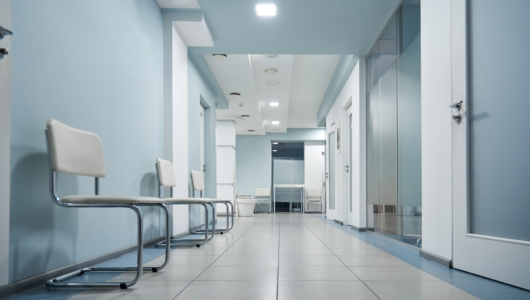Are Urgent Care Clinics a Flop? The Shocking Truth About Their Impact on Emergency Departments!
By
- Replies 4
The Australian healthcare system has been under immense pressure, with emergency departments (EDs) often bearing the brunt of overcrowding and long wait times. In response, the Albanese government introduced Medicare Urgent Care Clinics across the nation, aiming to alleviate the strain on EDs. But the question on everyone's lips is: Are these clinics actually making a difference, or are they just an expensive band-aid on a much larger wound?
The concept behind Urgent Care Clinics is simple: provide a middle ground for patients who require immediate attention for non-life-threatening conditions but don't necessarily need the full services of an ED. This should, in theory, free up emergency services to deal with more critical cases and reduce overall wait times. However, the effectiveness of these clinics has been a topic of heated debate.
In places like Ballarat, the clinics are fulfilling their purpose. Dr. Matt Nigro from the Ballarat Medicare Urgent Care Clinic reports that they're treating around 1,500 patients a month, with 70% of these individuals likely to have otherwise gone to the ED. This suggests a significant impact, potentially easing the load on the local hospital's emergency department.
The government's commitment of $720 million to open and run 75 clinics, with 12 more on the horizon, indicates a strong belief in this new model of care. The clinics operate with extended hours and are staffed by GPs and nurses, offering bulk-billed services to ensure accessibility. This model is not unique to Australia; it's been successful in countries like New Zealand, where it has led to a substantial decrease in ED presentations.
However, the latest data paints a more complex picture. While the overall number of ED presentations has continued to rise, there has been a decline or plateau in the number of less serious cases (Categories 4 and 5) in some states. This could suggest that Urgent Care Clinics are having a positive effect, but it's not enough to reverse the trend of increasing ED visits.
The Royal Australian College of General Practitioners (RACGP) has been vocal in its criticism, arguing that Urgent Care Clinics duplicate services that GPs already provide. RACGP president Dr Nicole Higgins contends that if the general practice were funded adequately, it could handle the demand for same-day care without the need for separate clinics. The cost difference is stark: treating a child with a sore ear at a GP costs the taxpayer around $43, compared to nearly $300 at an Urgent Care Clinic.
There's also the concern that these clinics might be misused by patients looking to avoid gap fees charged by GPs, as Urgent Care Clinics are bulk billed. Dr Charles Meribole from the Beeliar Urgent Care Clinic in Perth clarifies that these clinics are not meant to replace GPs but to treat urgent cases that require immediate attention to prevent worsening.
Despite the criticisms, many Australians who have used Urgent Care Clinics have positive reviews. They appreciate the shorter wait times compared to EDs and the convenience of accessing care without the delay of a GP appointment. This sentiment is echoed by individuals like Michelle Ruane, who found the service to be a significant improvement over her ED experiences.
One of the biggest hurdles for Urgent Care Clinics is public awareness. Many Australians are still in the dark about these clinics and their intended purpose. As more clinics open and awareness grows, their true impact on the healthcare system will become clearer.
So, are Urgent Care Clinics a flop? The answer isn't straightforward. While they show promise in reducing the burden on EDs for less serious cases, their cost-effectiveness and long-term sustainability remain under scrutiny. It's a complex issue that requires ongoing evaluation and perhaps a rethinking of how we fund and prioritise healthcare services in Australia.
 Dear readers, we'd love to hear your thoughts and experiences. Have you visited an Urgent Care Clinic, and if so, what was your impression? Do you believe they are a necessary addition to our healthcare system, or should the focus be on strengthening existing GP services? Share your stories and opinions in the comments below, and let's discuss the future of healthcare for Australians over 60.
Dear readers, we'd love to hear your thoughts and experiences. Have you visited an Urgent Care Clinic, and if so, what was your impression? Do you believe they are a necessary addition to our healthcare system, or should the focus be on strengthening existing GP services? Share your stories and opinions in the comments below, and let's discuss the future of healthcare for Australians over 60.
The concept behind Urgent Care Clinics is simple: provide a middle ground for patients who require immediate attention for non-life-threatening conditions but don't necessarily need the full services of an ED. This should, in theory, free up emergency services to deal with more critical cases and reduce overall wait times. However, the effectiveness of these clinics has been a topic of heated debate.
In places like Ballarat, the clinics are fulfilling their purpose. Dr. Matt Nigro from the Ballarat Medicare Urgent Care Clinic reports that they're treating around 1,500 patients a month, with 70% of these individuals likely to have otherwise gone to the ED. This suggests a significant impact, potentially easing the load on the local hospital's emergency department.
The government's commitment of $720 million to open and run 75 clinics, with 12 more on the horizon, indicates a strong belief in this new model of care. The clinics operate with extended hours and are staffed by GPs and nurses, offering bulk-billed services to ensure accessibility. This model is not unique to Australia; it's been successful in countries like New Zealand, where it has led to a substantial decrease in ED presentations.
However, the latest data paints a more complex picture. While the overall number of ED presentations has continued to rise, there has been a decline or plateau in the number of less serious cases (Categories 4 and 5) in some states. This could suggest that Urgent Care Clinics are having a positive effect, but it's not enough to reverse the trend of increasing ED visits.
The Royal Australian College of General Practitioners (RACGP) has been vocal in its criticism, arguing that Urgent Care Clinics duplicate services that GPs already provide. RACGP president Dr Nicole Higgins contends that if the general practice were funded adequately, it could handle the demand for same-day care without the need for separate clinics. The cost difference is stark: treating a child with a sore ear at a GP costs the taxpayer around $43, compared to nearly $300 at an Urgent Care Clinic.
There's also the concern that these clinics might be misused by patients looking to avoid gap fees charged by GPs, as Urgent Care Clinics are bulk billed. Dr Charles Meribole from the Beeliar Urgent Care Clinic in Perth clarifies that these clinics are not meant to replace GPs but to treat urgent cases that require immediate attention to prevent worsening.
Despite the criticisms, many Australians who have used Urgent Care Clinics have positive reviews. They appreciate the shorter wait times compared to EDs and the convenience of accessing care without the delay of a GP appointment. This sentiment is echoed by individuals like Michelle Ruane, who found the service to be a significant improvement over her ED experiences.
One of the biggest hurdles for Urgent Care Clinics is public awareness. Many Australians are still in the dark about these clinics and their intended purpose. As more clinics open and awareness grows, their true impact on the healthcare system will become clearer.
So, are Urgent Care Clinics a flop? The answer isn't straightforward. While they show promise in reducing the burden on EDs for less serious cases, their cost-effectiveness and long-term sustainability remain under scrutiny. It's a complex issue that requires ongoing evaluation and perhaps a rethinking of how we fund and prioritise healthcare services in Australia.
Key Takeaways
- Medicare Urgent Care Clinics were introduced to alleviate the workload on hospital emergency departments (EDs) across Australia.
- Despite some criticism from The Royal Australian College of General Practitioners for overlapping with GP services, many clinics are seen to be effective in managing patient overflow.
- More clinics are planned to open, with the government investing $720 million in the program and expecting to operate 75 clinics.
- While overall ED presentations have risen, there's been a decline or plateau in less serious cases, suggesting Medicare Urgent Care Clinics are having a positive impact.








